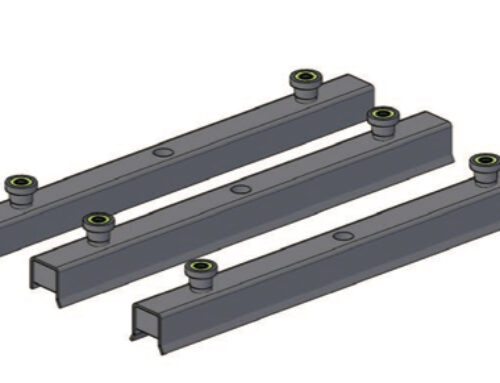Understanding Neodymium Magnet Grades The Basics
When diving into neodymium magnets, understanding the N rating is key. The “N” followed by a number, like N52 or N55, refers to the magnet’s maximum energy product (BHmax) — basically, how strong the magnet is. The higher the number, the stronger and more powerful the magnet. For example, an N55 magnet has a higher BHmax than an N52, meaning it can generate a stronger magnetic field in the same size.
But strength isn’t the whole story. Other factors that affect a magnet’s grade include:
- Coercivity — resistance to demagnetization over time or under stress.
- Remanence — magnetization left after an external magnetic field is removed.
- Temperature rating — how well the magnet performs as temperatures rise.
Here’s a quick visual to help: Imagine stacking magnets of the same size. An N55 magnet will lift heavier objects than an N52 because it packs more magnetic punch per volume.
At NBAEM, we focus on sourcing the strongest rare earth magnets tailored to your needs. Understanding these grades means you get exactly the performance your project demands without overpaying or compromising quality. Curious how this plays out in a direct comparison? Keep reading to see how N52 and N55 really stack up.
Head to Head Comparison N52 vs N55 Magnets

N55 magnet curve
When it comes to choosing between N52 and N55 neodymium magnet grades, understanding their key differences helps you pick the right fit for your project.
Strength and Performance
N55 magnets are slightly stronger than N52. The “N” rating refers to the maximum energy product (BHmax), measuring magnet strength. N52 has a BHmax around 52 MGOe (Mega Gauss Oersteds), while N55 reaches about 55 MGOe. This means N55 magnets have a marginally higher pull force and magnetic performance, making them the strongest rare earth magnets currently available on the market.
Cost Analysis
The jump in strength from N52 to N55 comes with a cost. N55 magnets are more expensive due to higher material purity and tighter manufacturing processes needed to achieve that extra strength. For most applications, N52 offers great value, but if maximum strength is critical, the higher price of N55 might be worth it.
Temperature Stability
Both N52 and N55 typically maintain good temperature ratings, often around 176°F (80°C), though this can vary a bit by manufacturer. N55 magnets tend to hold their magnetic properties slightly better at elevated temperatures due to improved coercivity, which means they resist demagnetization better in heat.
Durability and Handling
Both grades are similarly brittle and require careful handling. Their high magnetic strength makes N55 magnets a bit more prone to chipping if snapped together harshly, so extra care is advised for both. Protective coatings like nickel-copper-nickel plating are common to enhance durability and resist corrosion, regardless of grade.
Availability
N52 magnets are widely available from many sintered NdFeB suppliers and come in various shapes and sizes. N55 magnets, being newer and more specialized, are harder to find in large quantities or custom shapes but are gaining traction as demand for high strength magnets grows.
Pros and Cons Table
| Feature | N52 Magnets | N55 Magnets |
|---|---|---|
| Strength (BHmax) | ~52 MGOe, very strong | ~55 MGOe, strongest rare earth magnet |
| Cost | More affordable | Higher cost due to purity and process |
| Temperature Rating | Good (~176°F / 80°C) | Slightly better heat resistance |
| Durability | Brittle, needs careful handling | More brittle, careful handling needed |
| Availability | Widely available, many sizes/shapes | Limited availability, growing options |
In , N55 magnets offer a small boost in strength and temperature stability but at a higher price and less availability. N52 magnets remain a solid choice for most high strength magnet applications with easier sourcing and better cost-effectiveness.
Real World Applications Where N52 Shines vs When to Upgrade to N55

Knowing when to choose an N52 or N55 magnet comes down to your specific project requirements. Both are strong rare earth magnets, but their differences matter depending on the use case.
N52 Use Cases
- Hobby Projects: Perfect for DIY projects, small motors, or crafts where maximum strength is needed but budgets are tighter.
- Magnetic Holders and Latches: Great for strong, reliable hold without going over the top on cost.
- Sensors and Electronic Devices: Works well when stable magnetic performance at normal temperatures is acceptable.
N55 Scenarios
- High-Performance Motors and Generators: When you need the absolute strongest pull force and magnetic flux density for maximum efficiency.
- Advanced Magnetic Assemblies: Ideal for customized neodymium magnet shapes where every bit of strength counts.
- Temperature-Sensitive Applications: Better temp ratings and coercivity make N55 magnets suitable for environments with higher heat or more demanding thermal cycles.
Case Study
Imagine a drone manufacturer looking to improve motor efficiency. Upgrading from N52 to N55 magnets provided a noticeable boost in lift and battery life thanks to the higher BHmax and better temperature stability of N55. Though the cost was slightly higher, the performance gain justified the upgrade.
Factors for Selection
- Strength Needs: If your project can benefit from top-tier magnetic strength, N55 is the upgrade to consider.
- Temperature Exposure: For hotter environments, N55 holds performance better.
- Budget: N52 magnets often come at a more affordable price point, making them a solid choice for less demanding uses.
- Availability: N52 magnets are more common, so lead times may be shorter.
- Handling and Durability: Both grades are durable, but extreme applications favor N55 for longevity.
In , if you need solid performance with a reasonable cost, N52 magnets serve you well. When performance and temperature stability are critical, upgrading to N55 is the smart move.
How to Buy Quality N52 and N55 Magnets Tips from NBAEM
When buying N52 or N55 neodymium magnets, quality is key to getting the strength and durability you expect. Here are some tips from NBAEM to help you make the right choice:
- Source from Trusted Suppliers: Always choose reputable suppliers like NBAEM who specialize in sintered NdFeB magnets. They ensure you get genuine, high-grade magnets with consistent performance.
- Check BHmax and Coercivity Ratings: Look for datasheets that clearly state the BHmax (maximum energy product) and coercivity values. Higher BHmax means stronger magnets, while good coercivity ensures resistance to demagnetization.
- Ask About Temperature Ratings: Neodymium magnets vary in how well they handle heat. NBAEM offers magnets with stable NdFeB temperature ratings, which is vital for applications exposed to high temperatures.
- Inspect for Coating and Handling: Quality magnets come with protective coatings like nickel or epoxy to prevent corrosion and chipping. Proper handling during shipping also reduces the risk of damage.
- Consider Custom Shapes and Sizes: If your application needs unique magnet shapes or sizes, NBAEM can provide custom neodymium magnet shapes tailored to your specs.
NBAEM’s expertise and quality control mean you get reliable magnets that meet your needs, whether it’s a strong N52 or the premium N55 grade. Ready to upgrade your project with superior rare earth magnets? Contact NBAEM today to get started.





Leave A Comment